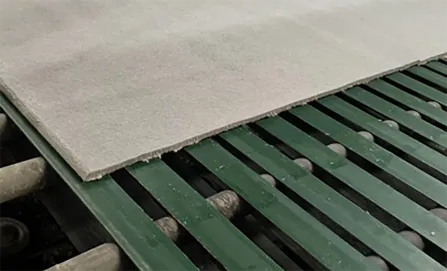- Afrikaans
- Albanian
- Amharic
- Arabic
- Armenian
- Azerbaijani
- Basque
- Belarusian
- Bengali
- Bosnian
- Bulgarian
- Catalan
- Cebuano
- Corsican
- Croatian
- Czech
- Danish
- Dutch
- English
- Esperanto
- Estonian
- French
- German
- Greek
- Hindi
- Indonesian
- irish
- Italian
- Japanese
- Korean
- Lao
- Malay
- Myanmar
- Norwegian
- Norwegian
- Polish
- Portuguese
- Romanian
- Russian
- Serbian
- Spanish
- Swedish
- Thai
- Turkish
- Ukrainian
- Uzbek
- Vietnamese
Nën . 09, 2024 22:56 Back to list
Energy Efficient Insulated Ceiling Access Hatch for Optimal Thermal Performance and Convenience
The Importance of Insulated Ceiling Hatches in Modern Construction
In today's construction landscape, energy efficiency and thermal management have become paramount concerns. One of the often-overlooked components in achieving these goals is the insulated ceiling hatch. These hatches play a crucial role in both residential and commercial buildings, providing access to spaces above the ceiling without compromising energy efficiency.
What is an Insulated Ceiling Hatch?
An insulated ceiling hatch is a specialized access point designed to allow entry to areas above a ceiling, such as attics or mechanical systems, without losing heat or cooling energy. These hatches are typically made from durable materials and are filled with insulation to minimize the transfer of heat. They can be installed in various locations, including ceilings in hallways, utility rooms, or kitchens, and are available in different sizes to suit specific needs.
Energy Efficiency Benefits
One of the key benefits of an insulated ceiling hatch is its contribution to energy efficiency. Traditional access points often create thermal bridges, which lead to energy loss. This is particularly critical in climates where heating or cooling expenses constitute a significant portion of utility bills. By employing an insulated ceiling hatch, builders can effectively mitigate these losses. The insulation materials used in these hatches reduce heat flow, ensuring that conditioned air remains inside the living space, leading to lower energy costs and a more comfortable indoor environment.
Noise Reduction
In addition to energy efficiency, insulated ceiling hatches can help with noise reduction. In many buildings, particularly those that house HVAC systems or other mechanical equipment above the ceilings, noise can become a significant issue. The insulation within the hatch can dampen sound transmission, leading to a quieter indoor environment. This is especially beneficial in multi-family units or commercial spaces where noise reduction is a priority for occupants.
insulated ceiling hatch

Safety and Accessibility
Insulated ceiling hatches are designed not only to provide energy efficiency but also to ensure safety and accessibility. Many hatches come with built-in safety features, such as load-bearing capabilities and child-proof locks, making them safe for various environments. In commercial settings, where maintenance personnel need to access equipment above the ceiling regularly, these hatches provide an essential functionality. The ease of access allows for quick inspections and repairs, minimizing downtime and enhancing operational efficiency.
Design Flexibility
Another advantage of insulated ceiling hatches is their design flexibility. Manufacturers offer a range of styles, finishes, and sizes, allowing architects and builders to select a hatch that complements the overall aesthetic of the space. Whether a building features a contemporary design or a more traditional look, there is an insulated hatch that can seamlessly blend in while serving its functional purpose.
Installation Considerations
When installing an insulated ceiling hatch, it’s crucial to consider the location and the surrounding materials. Proper sealing around the hatch is essential to prevent air leakage and to maintain the integrity of the insulation. Furthermore, following local building codes and regulations is important to ensure safety and effectiveness. Professional installation is recommended to maximize the benefits and ensure that the hatch operates as intended.
Conclusion
In summary, insulated ceiling hatches are an integral part of modern construction that contributes significantly to energy efficiency, noise reduction, safety, and accessibility. As the demand for sustainable building practices continues to rise, the importance of such components cannot be overstated. By incorporating insulated ceiling hatches into building designs, architects and builders can promote energy conservation while providing functional and safe access to essential systems above the ceiling. This small yet impactful feature exemplifies how attention to detail in construction can lead to significant improvements in overall building performance.
-
Transform Interiors with PVC Gypsum Ceiling: A Stylish, Durable, and Moisture-Resistant SolutionNewsMay.19,2025
-
The Smart Interior Upgrade: Discover the Durability and Versatility of Gypsum Ceiling Access Panel SolutionsNewsMay.19,2025
-
The Smart Choice for Interior Design: Discover the Value of PVC Gypsum Ceiling SolutionsNewsMay.19,2025
-
Mineral Fiber Ceiling Tiles: The Smart Blend of Performance and AestheticsNewsMay.19,2025
-
Mineral Fiber Ceiling Tiles: The Superior Choice Over Gypsum for Sound and Fire SafetyNewsMay.19,2025
-
Mineral Fiber Ceiling Tiles: Eco-Friendly Strength and Style for Every CeilingNewsMay.19,2025







